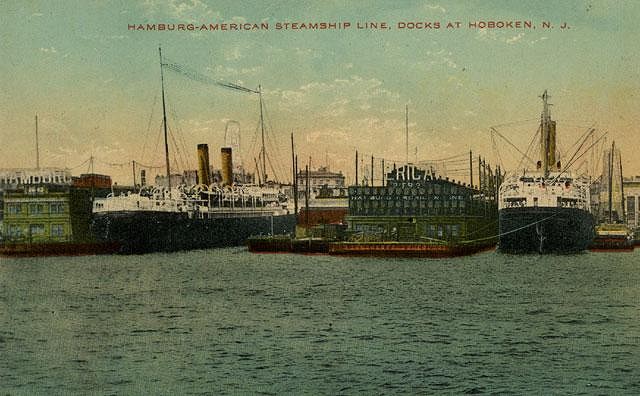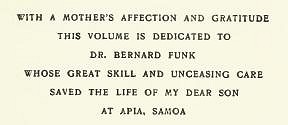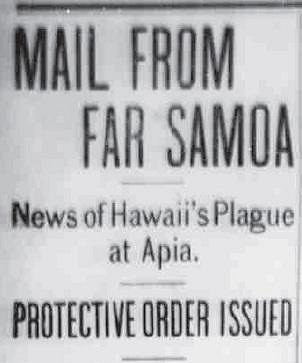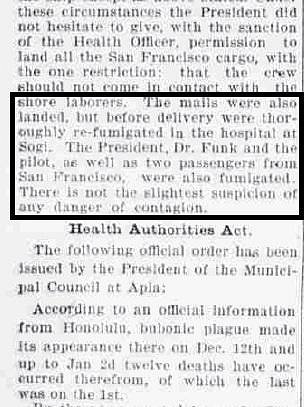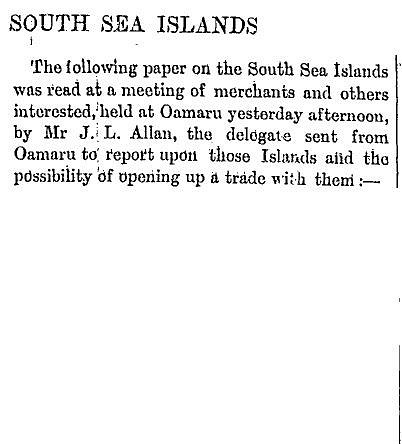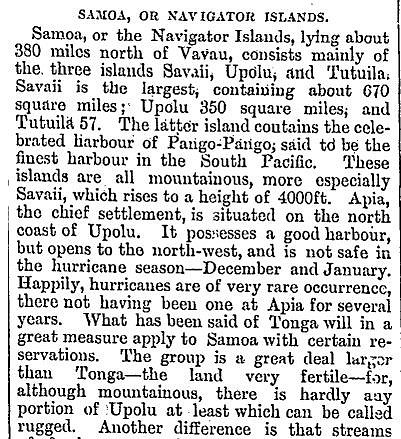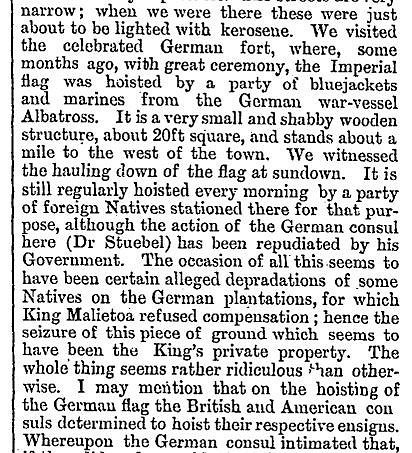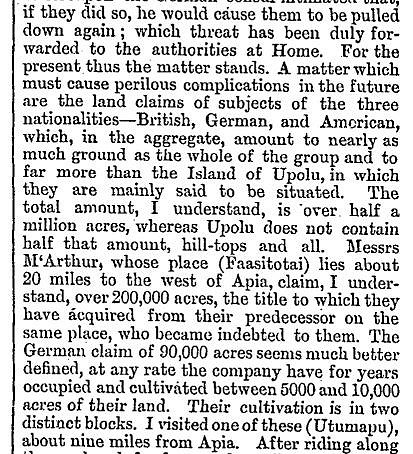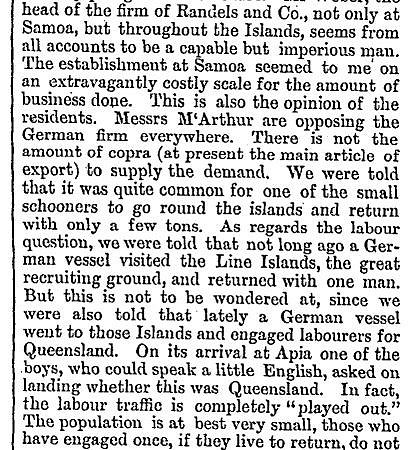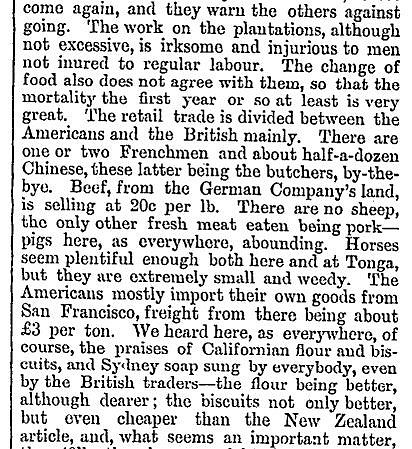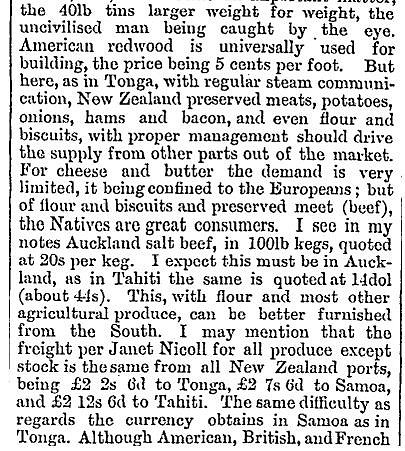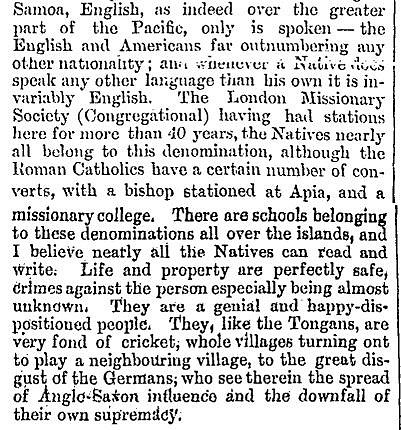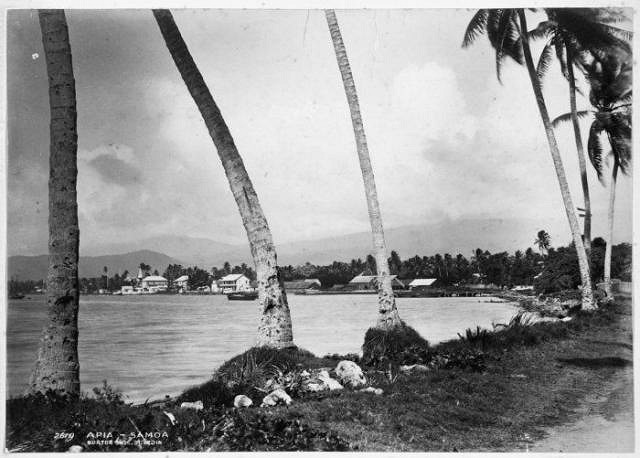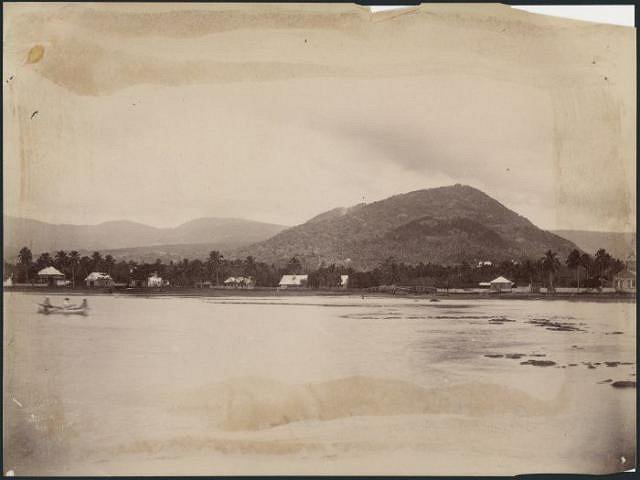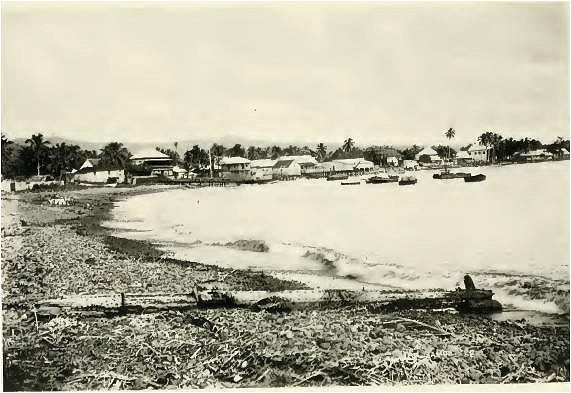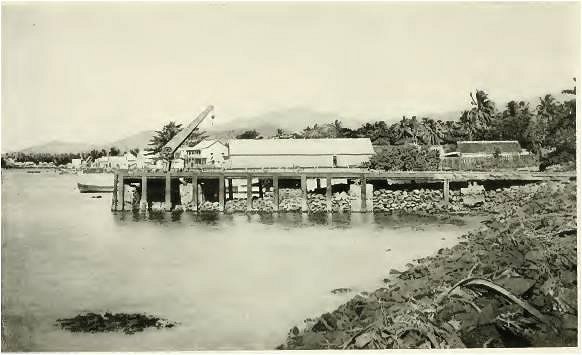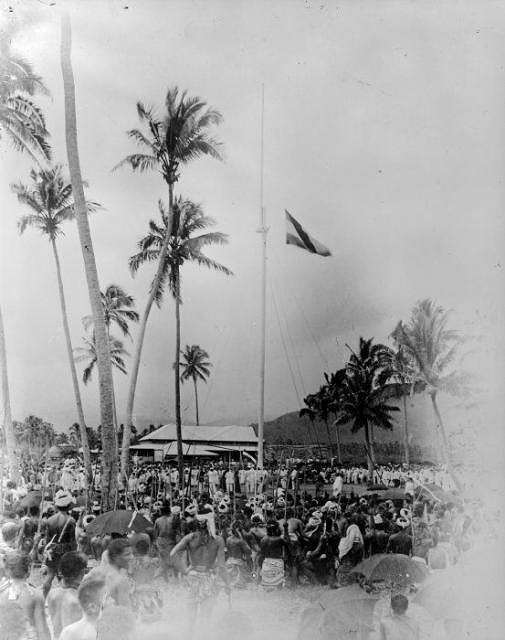Tiki Central / Tiki Drinks and Food / The real Dr. Funk
Post #628249 by TikiTomD on Sat, Mar 10, 2012 9:42 AM
|
T

TikiTomD
Posted
posted
on
Sat, Mar 10, 2012 9:42 AM
Following victory in the Franco-Prussian War, Germany unified into a formal nation state, accomplished by a series of declarations and treaties over January to May of 1871. There was economic hardship and high unemployment most everywhere in Europe at the time, extending to the US in the long depression that began in 1873. From the information at hand, it’s not clear how long Dr. Funk remained in military service after the Franco-Prussian War, or precisely what he did for the next six years after the war. Perhaps that will be revealed by the Neubrandenburg Museum Yearbook article. But, courtesy of Leilani Burgoyne’s “Going ‘Troppo’ in the South Pacific: Dr. Bernhard Funk of Samoa 1844–1911,” we pick up his story again in 1878, when he was hired to be a medical officer for the Hamburg American Steamship Company. This was a transatlantic shipping enterprise more formally known as the Hamburg-Amerikanische Paketfahrt-Actien-Gesellschaft (HAPAG), which literally translates as Hamburg American Packet-shipping Joint Stock Company. It was sometimes also referred to as the Hamburg America Line. House Flag of HAPAG Shipping Line (center detail) The company was established at Hamburg in 1947. Adolph Godeffroy, its co-founder and presiding officer until 1880, was the brother of Johann Cesar Godeffroy, who in turn was the head of J.C. Godeffroy & Son, the Hamburg firm that had established a regional headquarters for copra and coconut oil trade in Apia, Samoa in 1857. HAPAG made its money serving the market created by German and Eastern European immigration to the United States. It grew into the largest German shipping company and, at times, was the world’s largest shipping company. HAPAG still exists today, but merged in 1970 with Bremen-based North German Lloyd to form Hapag-Lloyd AG. HAPAG Postcard ca 1915 After two years of service with HAPAG, Dr. Funk was offered a position as medical officer for J.C Godeffroy & Son at the Samoa plantations of the firm, presumably because word of his medical proficiency reached the firm through its family and business ties with HAPAG. He accepted the offer. When 35-year old Dr. Bernhard Funk stepped ashore at Apia Harbor in February of 1880, he might have imagined many things to come, but surely not his enduring legacy as a namesake cocktail known in his own time from “from Samoa to Tahiti… in every bar and club” and even today more than one hundred years after his passing, nor his destiny to meet, befriend and serve as family physician to one of the most celebrated literary geniuses of the 19th century, Robert Louis Stevenson, a circumstance that would immortalize him in literature as a peculiar South Seas character of the period. Regardless of what crossed his mind, the arrival of the first fully qualified resident medical practitioner and surgeon in Apia was a cause for celebration among the local population. Dr. Funk immediately went to work, traveling almost daily between the huge coconut plantation at Utumapu and his home at Sogi in the Apia district, where he established a small private hospital. That was quite a distance, as Utumapu is about nine miles from Apia, and horse or horse carriage would have been the mode of transit. He would treat patients of the plantation in the morning and make house calls in the afternoon. According to Leilani’s paper, Dr. Funk treated everyone without regard to race or nationality, or even ability to pay. Llewella Pierce Churchill, wife of the American Consul in Samoa, wrote in her 1902 book, Samoa `Uma...
As noted in an earlier post, her book carries a dedication to Dr. Funk...
Leilani observed that the lack of roads and limited means of communication were significant obstacles in Funk’s ability to treat his patients effectively, and he was often alerted to urgent cases by letter or messenger, slow and susceptible to misinterpretation. As a trade center and primary port of entry, Apia was routinely plagued by a whole range of introduced diseases, among them typhus, influenza, tuberculosis, dysentery, whooping cough, measles, mumps and the dreaded “white curse”, venereal disease. In the particular case cited below, Dr. Funk had to deal with a bubonic plague risk posed by an arriving ship from Honolulu... The Hawaiian Gazette February 6, 1900 At the time of Dr. Funk’s offer of employment by J.C. Godeffroy & Son, the firm was already in financial distress from bad European investments. According to The Origins of International Rivalry in Samoa: 1845-1884, the South Sea business, the most successful portion of the firm's activities, was consolidated into a stock company in 1878 formally named Die Deutsche Handels und Plantaeng Gesellschaft der Südsee Inseln zu Hamburg (DHPG), though the majority of shares remained in the hands of Godeffroy & Son. Robert Louis Stevenson stated in A Footnote to History that this “is (in practice) shortened to the D. H. and P. G., the Old Firm, the German Firm, the Firm, and (among humorists) the Long Handle Firm.” Baring Brothers of London advanced a loan secured by the firm’s Samoa holdings and the Godeffroy shares, postponing failure about a year. The ultimate failure of Godeffroy & Son in December 1879 threatened to throw into British hands the greater part of German interests in Samoa, so Otto von Bismarck, Chancellor of Germany, appealed to the German government for a bailout. This was not approved, but a German board of directors was hastily assembled to assume the Godeffroy debt from Baring Brothers, preserving the German interests in Samoa. The new directors carried on the traditions, methods, and policy of its forerunner. Here’s an excerpt from a 1900 map showing the Apia area, including the Utumapu plantation that was the location of Dr. Funk’s medical practice for the German Firm (from the digital collections of the National Library of Australia)... Spezialkarte der Samoa-Inseln [cartographic material] / Paul Langhans The following newspaper article offers an overview of the political, social and physical conditions in Samoa of the times, including a description of Apia... Otago Daily Times August 20, 1885 Some photos of Apia from the time of Dr. Funk... Burton Brothers :Apia, Samoa, 1884 Charles H Kerry & Company fl 1883-1913 (Firm; Sydney, N.S.W.) : Photograph of Apia, Samoa, from the reef, ca 1885 And here are yet some more views of Apia, from Llewella Churchill’s Samoa `Uma... Apia, the little town strung along the beach, ca 1900 Wharf of the German Firm – Apia, ca 1900 Raising of the German flag in Samoa, 1900 German Flag of Samoa As an aside, while researching the HAPAG lines, I ran across this item from the Hamburg shipping firm of A. Kirsten... House Flag of A. Kirsten Shipping Line -Tom |


